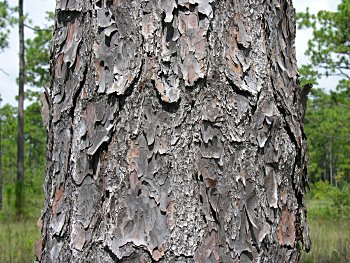
Bark of Pinus palustris (Copyright W. Cook)


Bark of Pinus palustris (Copyright W. Cook)

Bark of Pinus palustris (Copyright W. Cook)

Twigs of Pinus palustris (coming soon)


Bud of Pinus palustris (Copyright W. Cook)

Needles of Pinus palustris (Copyright W. Cook)


Grass stage of Pinus palustris (Copyright W. Cook)

Needles of Pinus palustris (Copyright W. Cook)

Needles of Pinus palustris (Copyright W. Cook)

Cones of Pinus palustris (Copyright W. Cook)


Cones of Pinus palustris (Copyright W. Cook)

Cones of Pinus palustris (Copyright W. Cook)

Seeds of Pinus palustris (Photo: S. Hurst)


N.C. distribution of Pinus palustris


U.S. distribution of Pinus palustris
Pinus palustris (Longleaf pine)
(Common; formerly throughout the CP, Sandhills, and lower Pd, on a wide variety of soils [sandy, loamy, clayey, or peaty], from very dry to very wet conditions, in savannas, woodlands, and forests affected by relatively frequent natural [lightning caused] fires [likely augmented by native Americans], now reduced to less than a tenth of its former abundance by a variety of forces, including turpentining, timbering, free-range hogs, fire suppression, and "site conversion" by foresters to other trees, now extremely rare in VA and north of the Neuse River in NC, still occurring in some abundance in the outer CP from Carteret County, NC south into GA, in the Bladen Lakes area of Bladen and Cumberland counties, and in the Sandhills of Harnett, Hoke, Scotland, Richmond, Moore, Anson, and Montgomery counties, NC and south into GA; Pd, CP; Fl: Mar-Apr, Fr: Sep-Oct)















